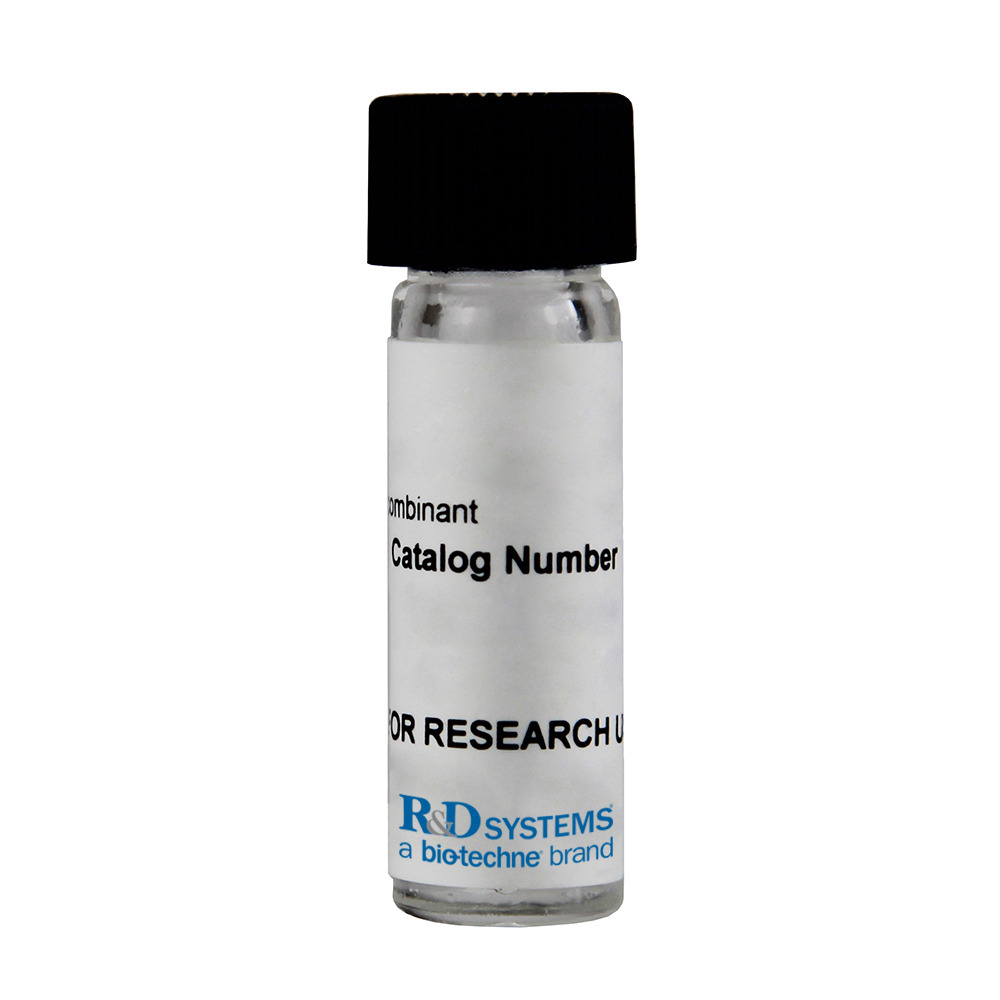Recombinant Mouse MGL2/CD301b Protein, CF
R&D Systems, part of Bio-Techne | Catalog # 2835-MG

Key Product Details
Product Specifications
Source
Ser72-Pro332, with an N-terminal 10-His tag
Purity
Endotoxin Level
N-terminal Sequence Analysis
Predicted Molecular Mass
SDS-PAGE
Activity
Immobilized rmMGL2 at 2.5 µg/mL (100 µL/well) on a Mouse Anti-polyHistidine Monoclonal Antibody (Catalog # MAB050) coated plate can bind biotinylated beta-Galactosamine-N-Acetyl-Polyacrylamide ( beta-Gal-NAc-PAA) with a linear range of 2-150 ng/mL.
Formulation, Preparation and Storage
2835-MG
| Formulation | Lyophilized from a 0.2 μm filtered solution in PBS. |
| Reconstitution |
Reconstitute at 100 μg/mL in sterile PBS.
|
| Shipping | The product is shipped at ambient temperature. Upon receipt, store it immediately at the temperature recommended below. |
| Stability & Storage | Use a manual defrost freezer and avoid repeated freeze-thaw cycles.
|
Background: MGL2/CD301b
Mouse Macrophage Galactose N-acetyl-Galactosamine (GalNAc) specific Lectin 2 (MGL2), also known as CD301b, is a 38 kDa member of the C-type lectin family (1). Two MGL proteins are encoded by separate genes in the mouse, but share 91% amino acid (aa) identity in the extracellular domain (ECD) (1). Only one MGL occurs in human and rat and this MGL is structurally more similar to mouse MGL1 than MGL2. However, human MGL and mouse MGL2 both bind specifically to terminal GalNAc residues, in contrast with mouse MGL1 which binds Lewis X (1, 2). GalNAc recognition is likely to be important in dendritic cell-mediated tolerance to self-gangliosides as well as recognition of tumor antigens and parasite glycoproteins (2). Both mouse MGL proteins are expressed on immature dendritic cells. Mouse MGL2 and MGL1 are markers for connective tissue macrophages of a type termed alternately activated macrophages. These macrophages are induced by IL-4 that is produced during Th2-mediated inflammatory responses to parasitic infections or allergic airway inflammation (3, 4). Quantitative RT-PCR after helminth infection shows increasing expression of MGL2 for at least 29 days while MGL1 shows a peak expression at 7 days (3). This, and data from MGL1 knockout mice,(5) indicates that MGL1 is critical during formulation of granulation tissue, but MGL2 remains involved during chronic infection. Mouse MGL2 is synthesized as a 332 aa type II transmembrane protein with an N-terminal 51 aa cytoplasmic region, a 26 aa TM segment, and a 255 aa ECD. The ECD contains one 150 aa carbohydrate recognition domain (CRD) that shows 76% and 68% aa identity with rat or human MGL, respectively.
References
- Tsuiji, M. et al. (2002) J. Biol. Chem. 277:28892.
- Van Vliet, S. J. et al. (2005) Int. Immunol. 17:661.
- Raes, G. et al. (2005) J. Leukoc. Biol. 77:321.
- Sato, K. et al. (2005) Int. Immunol. 17:559.
- Sato, K. et al. (2005) Blood 106:207.
Long Name
Alternate Names
Entrez Gene IDs
Gene Symbol
UniProt
Additional MGL2/CD301b Products
Product Documents for Recombinant Mouse MGL2/CD301b Protein, CF
Product Specific Notices for Recombinant Mouse MGL2/CD301b Protein, CF
For research use only
